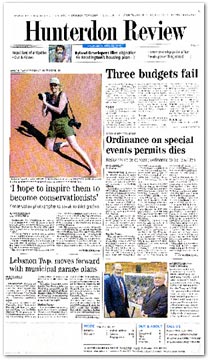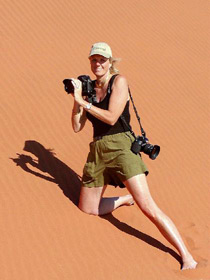Cameras As Tools For Conservation“As a student from the 60’s, I grew up thinking we could each make a difference in this world,” said Jones. “So I have always tried to make the corners of the world where I am a bit better for having been there. The International League of Conservation Photography, of which I am a fellow, has been recently formed to support those of us who feel that our planet is in crisis and that we can use our cameras as tools of conservation.” Jones, who has traveled since childhood and into her adult life to more than 50 countries, became a conservation photographer in 1985 after a visit to Kenya during which she saw the plight of protected areas and wildlife first hand. She says the photo which cemented her choice to pursue conservation photography was a picture she took in 1987 of two cheetahs sitting side by side, gazing away from her lens out onto the plains. “It made me think of the author Saint-Exupery’s comment that, ‘Love does not consist in how you look at each other, but instead, how you gaze out upon the world together,” said Jones. “That one image connotes the connections of existence – connections between wildlife, ecosystems and cultures and between us as individuals. That is what my photography is about.” In addition to documenting conservation through her photography, Jones has taken on an active role in affecting positive change by founding a non-profit organization called No Water No Life. Since 2006, she has paired her photography talents with science to raise public awareness of the vulnerability of freshwater resources. “If There Is No Water, There Is No Life”“I was a co-pilot flying and photographing from a low-flying Cessna over nine sub-Saharan African countries,” said Jones. “I kept looking down from my right-hand seat and realizing that there was no life to be found beyond the rivers and lakeshores. It is very obvious flying over Africa: if there is no water there is no life. Then it became obvious that the lack of clean, fresh water in Africa could be a precursor to what the rest of the world could soon be facing.” “Since awareness is the first step towards correcting any problem, I have dedicated myself to using the power of photography, combined with science and stakeholder knowledge, to help raise international awareness of global threats to our vital freshwater resources,” said Jones. No Water No Life studies six watersheds: three in Africa and three in North America, including the Raritan River Basin locally. “The Raritan was the first North American watershed we chose, because it is my watershed,” said Jones. “Because it is the largest drainage in the country’s most densely populated state, it is a good illustration of problems faced by urban watersheds. The Lower Raritan has been rated as the nation’s 11th most polluted river, and the state has the largest amount of impervious surface coverage per resident in the nation. The Upper Raritan faces challenges of maintaining open space and quality of the headwaters that supply millions downstream. It needs to control an excessive deer population that is seriously reducing forest renewal and therefore water retention.” The five other watersheds which No Water No Life studies are the Mississippi River Basin, the Columbia from British Columbia to Oregon, the Nile River, the Omo River in Ethiopia and Kenya, and the Mara River in Kenya and Tanzania. “No Water No Life’s six case-study watersheds illustrate universal issues threatening freshwater availability and quality that need to be addressed worldwide,” said Jones. “No Water No Life has conducted 8 expeditions to its case-study watersheds thus far, accumulating compelling images that tell three stories: the value of our watersheds, the threats they face, and solutions being proposed or enacted by concerned stewards and scientists. We have interviewed and filmed over 100 stakeholders and stewards, compiling ‘Voices on the Rivers’ that tell the story of watershed conservation in this decade. The next major expedition is planned for this September to cover the length of the Mara River [in Kenya], pending funding to cover the expenses.” Jones says the mission of No Water No Life is to document, educate and foster partnerships. As such, her participation in Friday’s Arbor Day assembly is very close to her heart as well as her home. “No Water No Life is committed to creating a curriculum that will join students upstream and downstream as advocates for the protection of their watersheds,” said Jones. “[No Water No Life] hopes to educate both adults and today’s youth about the vulnerability of our watersheds, our abuse of our watersheds and the need to correct current conditions. Education is the first step to solutions.” Further information about No Water No Life is available at www.nowater-nolife.org. Alison Jones Photography can be seen on www.alisonjonesphoto.com.
|


